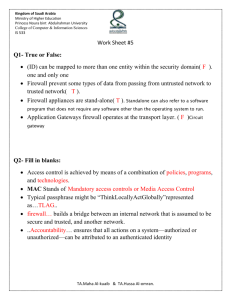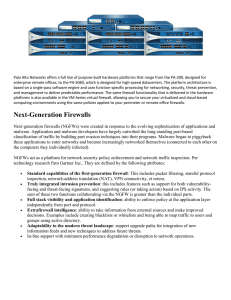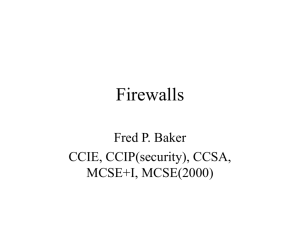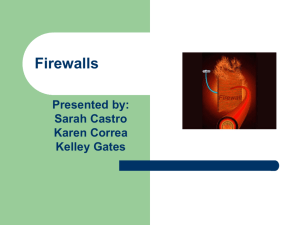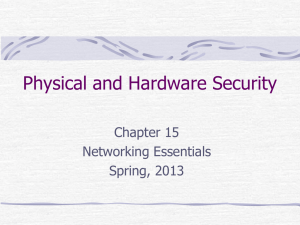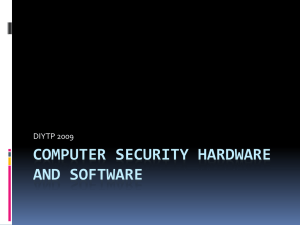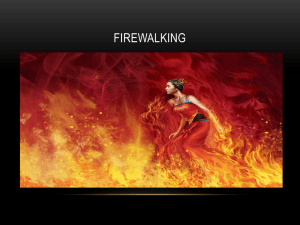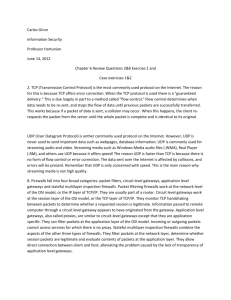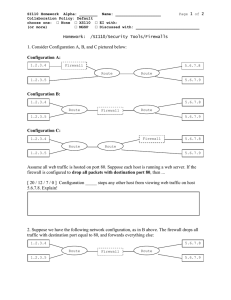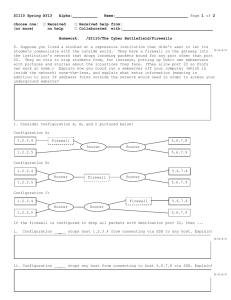Firewalls - Brian Kiehl
advertisement
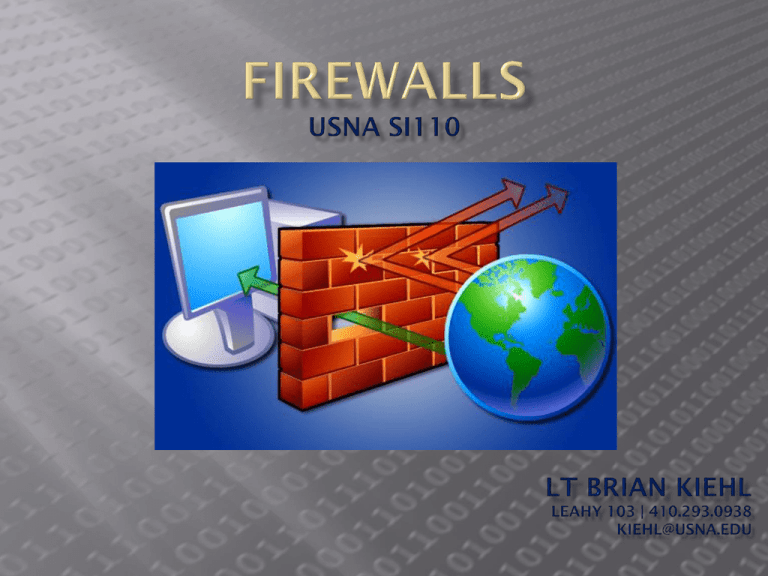
By using a firewall: We can disable a service by throwing out packets whose source or destination port is the port number for that service. Because the operating system lets some packets pass and throws out others, this is called filtering. Firewalls 2 Application, device, or set of devices designed to permit or deny network transmissions based upon a set of criteria Used to Protect networks from unauthorized access Permitting legitimate communications to pass Can be implemented as Software application Specialized hardware devices Firewalls 3 List of criteria used to determine whether to allow or reject network traffic Host reads Internet and Transport layers of received packets Criteria referred to as rules Looks for criteria that matches ACL rules Rule syntax varies by vendor Underlying features provided are the same Firewalls 4 Rules are evaluated in order from top to bottom Once a packet meets a rule’s criteria The prescribed action is taken Remaining rules are ignored Process is repeated for every packet received The packets are being filtered Firewalls 5 ACLs can filter by IP address TCP/UDP port number Protocol type More advanced ACLs can filter by Rate of traffic TCP connection state Application Layer content And others… Firewalls 6 Runs as a service on a host Integrated into the network stack Allows application to filter network traffic Many operating system include software-based firewalls Windows Firewall Linux iptables Firewall products also available as standalone applications or integrated into security suites Many routers also have firewall capability Firewalls 7 Packet filtering requires additional overhead Packets must be dissected and compared against defined rules Can significantly affect network performance Implement the firewall as a single, specialized device Usually placed at the network perimeter Firewalls 8 Webserver listening on port 80 Effects of turning off traffic into the firewall bound for port 80 on the host to the far left in the two scenarios? No other hosts will be able to access the webserver Firewalls 9 Webserver listening on port 80 Effects of turning off traffic into the firewall bound for port 80 on the host to the far left in the two scenarios? Only hosts on the 8.55.221.0 network will be able to access the webserver Firewalls 10 Firewalls 11 10.10.10.8 HTTP Server Internet (Must be accessible to all) IP addresses 7.7.7.7 and 8.8.8.8 Must not be able to access your network 10.10.10.16 DNS Server (Must be accessible to all) 10.10.10.32 SMB Server (No external access allowed) Service Protocol Port TCP/UDP Tools World Wide Web HTTP 80 TCP Browsers Name Resolution DNS 53 UDP nslookup Secure Remote Shell SSH 22 TCP ssh (PuTTY) Secure Remote File Sharing SMB 445 TCP Windows Explorer

